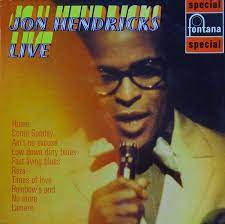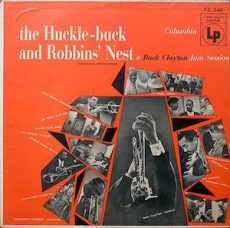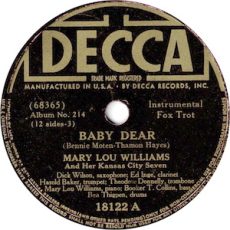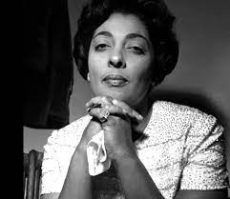
Daily Dose Of Jazz…
Hank Shaw was born Henry Shalofsky was born June 23, 1926 in London, England. At the age of 15 he played with Teddy Foster’s band during World War II. In the latter half of the decade he played around his hometown with Oscar Rabin, Frank Weir, and Tommy Sampson, then switched permanently from swing to playing bebop music in 1946 after hearing Dizzy Gillespie.
Visiting the United States in 1947 he came with close friend and fellow pioneer bebopper altoist Freddy Syer. However, unable to secure work permits they moved to Canada where they played with Oscar Peterson and Maynard Ferguson. Returning to England in 1948, Hank was one of the early Club Eleven players, along with Ronnie Scott, John Dankworth, Lennie Bush, and others. He also played with many of these musicians on the recordings of Alan Dean’s Beboppers.
After Club Eleven shuttered, Shaw played with Vic Lewis and toured Europe with Cab Kaye, then joined Jack Parnell’s ensemble in 1953 and Ronnie Scott’s nonet in 1954. He joined Jamaican alto saxophonist Joe Harriott in his celebrated quintet in 1958 but left with pianist Harry South when Harriott sought to introduce his “free-form” concept. Shaw played regularly both live and as a session musician for many British jazz musicians over the course of the next twenty or so years, working with Joe Harriott, Tony Crombie, Don Rendell, Tony Kinsey, Stan Tracey, Bill Le Sage, and others.
He led a quartet at the 100 Club in the Sixties, and played in the Bebop Preservation Society and the John Burch Quartet for over two decades each. He retired due to ill health in the late 1990s. Bebop trumpeter Hank Shaw transitioned four months past his 80th birthday on October 26, 2006 in Kent, England.
More Posts: bandleader,history,instrumental,jazz,music,trumpet

The Jazz Voyager
This week the Jazz Voyager is flying out of Paris and is off to Denmark’s capital city to be part of the audience in the legendary jazz venue, Jazzhus Montmartre. The club gained its status as one of Europe’s preeminent venues during the Sixties when homegrown world class stars such as bassist Niels Henning Ørsted Pedersen emerged. Soon Black musicians Coleman Hawkins, Dexter Gordon and Ben Webster, worn down by their treatment at home became Copenhagen residents and were intrigued by the warmth shown to them by Scandi audiences.
There I’ll be witness to a jazz competition between three up and coming jazz groups with their own take on where the music is heading. The jazz competition focuses on the development of young jazz musicians by offering them the opportunity to play live at professional venues, get professional feedback on their music, coaching and the opportunity to be exposed on the radio via P8 Jazz.
Kosmos Trio plays modern jazz in a minimalist and Nordic-sounding sound universe. The trio speaks a simple and understandable language via complex compositional ideas. This field of tension makes them an interesting and wide-ranging group that ensures a present and great concert experience. The trio is Frede Holger: Piano, Harald Hagelskjær: bass, Gustav Hagelskjær: drums.
KÖZ is a burgeoning band with origins in the Roots & Hybrid scene in Aarhus. The band fuses genres and styles from distant lands with modern western tones. The music encourages dancing as well as reflection. Rock, hip-hop, jazz and Afro-grooves are mixed with odd tones and time signatures and melancholic floating universes from the cold north. :The group is Anne Skov Frost Jensen, vocals & trombone, Alma Hjelholt: vocals & trumpet, Aske Høj Krogh: bass, Bjarke Frandsen Andersen: keys & rap, Frederik Lyhne Uhrenholt: guitar, Jacob Tang Maunsbach: guitar, Johanna Mosbech: vocals & trumpet , Mathias Ploug: drums.
Aske Stubkjær plays Nordic-sounding jazz with an experimental approach. The tracks emerge from visual and auditory observations from everyday natural actions. He captures situations in the present, and tries to embrace the moment in his music by using real sound and integrating the moments in the tracks. The duo is Aske Stubkjær: piano, Daniel Skov: guitar & synthesizer.The club is located at Store Regnegade 19A, 1110 Copenhagen K. For more info the number is 70 20 20 96.
More Posts: adventure,album,club,competition,festival,genius,jazz,museum,music,preserving,restaurant,travel

Daily Dose Of Jazz…
Lemuel A. Davis was born in Tampa, Florida on June 22, 1914. He started playing alto saxophone in high school and worked in semi-pro bands before moving to New York City in the early Forties. There his career started with pianist Nat Jaffe. He went on to play with the Coleman Hawkins Septet in 1943 and with Eddie Heywood’s group.
Throughout the 1940s, he played in a variety of jazz groups. Lem composed the bebop tune Lem Me Go in 1946 and recorded it with Eddie Safranski’s All Stars along with Vido Musso, Sanford Gold and Denzil Best. Then in 1953 he appeared on Buck Clayton’s The Hucklebuck recording. He continued playing in New York City throughout the 1950s, recording four albums with Buck Clayton between 1954 and 1956. He recorded little thereafter.
Alto saxophonist Lem Davis, mostly associated with swing music, transitioned on January 16, 1970 in New York City.
More Posts: history,instrumental,jazz,music,saxophone

Daily Dose Of Jazz…
Booker Collins was born on June 21, 1914 in Roswell, New Mexico. Emerging from the New Mexico Military Institute to play in Bat Brown’s Band, a territory band. By the mid-’30s he was keeping very good company playing with pianist Mary Lou Williams and Her Kansas City Seven, cutting sides with her when he was only 16. In 1934, his break came when he got into the band of Andy Kirk and His Clouds Of Joy, staying for the next decade and playing alongside Williams in the rhythm section. Kirk’s hiring replaced the tuba with the double bass.
Booker’s final job of note was with Chicago, Illinois guitarist and drummer Floyd Smith as part of his trio, a stint that lasted from 1946 until the early ’50s, when this great bass man finally laid his big instrument down in terms of full-time playing. He made a few appearances at festival occasions in the ensuing decades but was in Chicago’s recording studios in the late ’50s cutting sides for independent labels.
Returning to performing he joined a combo called the Shades of Rhythm to backup blues singer Mad Man Jones on the demanding Come Here. Collins’ involvement with this group of shifting personnel began in 1952 when he was part of a version that took the risk of cutting sides for the Chance label.
He also performed and recorded with Bert Johnson and the group Six Men And A Girl. Little is known about the death of double bassist Booker Collins who also played the valve trombonist and tuba. It appears he faded into obscurity.
More Posts: bass,history,instrumental,jazz,music,trombone,tuba

Three Wishes
Girl talk always ensued when Pannonica and Carmen McRae were together and when she wanted to know what her friend would say asked her what her three wishes would be and she told her:
- “I wish that we had more people that appreciated good American music.”
- “I wish my father were alive – it’s in the wrong order! That should come first.”
- “And the other one… I hope that I’ll know when I’ve had it.”
*Excerpt from Three Wishes: An Intimate Look at Jazz Greats ~ Compiled and Photographed by Pannonica de Koenigswarter
More Posts: baroness,history,instrumental,jazz,music,pannonica,three,vocal,wishes




